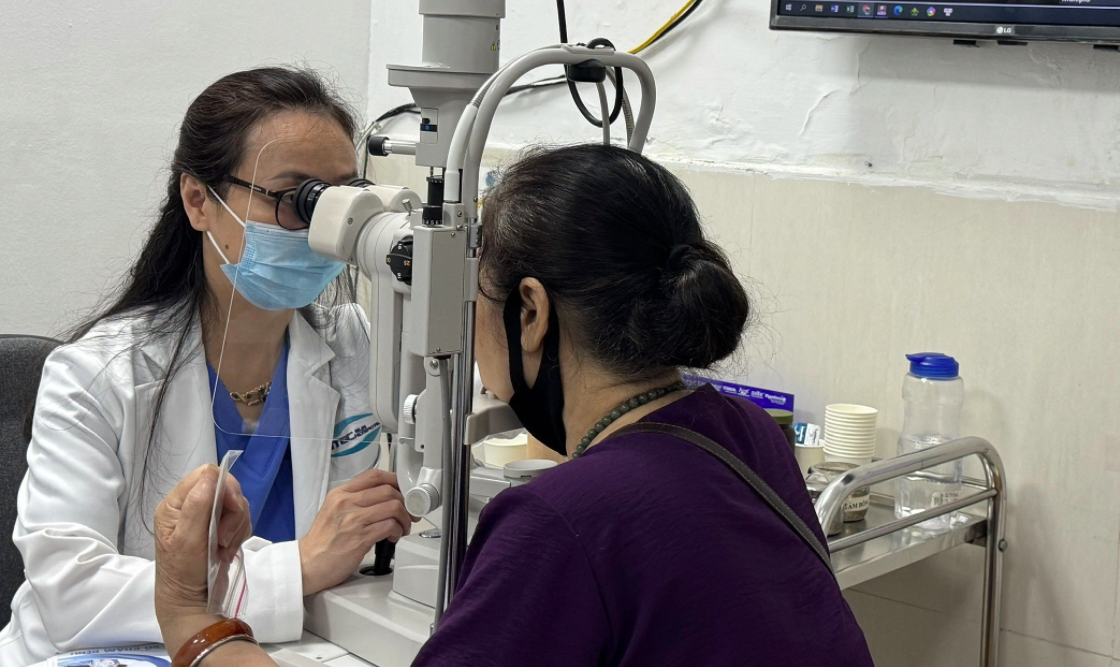Dr. Nguyen Trong Khoa, Deputy Director of the Department of Medical Examination and Treatment Management, shared this information at a scientific symposium on building a comprehensive management model for patients with diabetic retinopathy and macular edema at hospitals. The Ministry of Health and Roche Pharma Vietnam co-organized the event on 21/8.
More than half of the 7 million people with diabetes are undiagnosed, creating a substantial "iceberg" of potential complications, according to Dr. Khoa. Of these, 39.5% involve eye and nerve complications. Other reports indicate that 6 out of every 10 diabetes patients have eye complications, but only a small fraction are screened and diagnosed early. An estimated 320,500 Vietnamese patients had diabetic macular edema as of 2016.
Diabetic retinopathy and macular edema are leading causes of vision loss. With an aging population and rising diabetes rates, these conditions are projected to have an increasing impact on the community.
"One of the greatest challenges is the low rate of management and treatment for patients with diabetic eye complications," Dr. Khoa said. For example, in Ba Ria - Vung Tau, out of approximately 18,000 patients with diabetic retinopathy and macular edema, only 600 receive outpatient treatment at the provincial eye hospital.
Major obstacles include limited public awareness, difficulty accessing healthcare services, and the financial burden, preventing many from receiving early intervention. This leads to irreversible vision loss and blindness, highlighting the urgent need for comprehensive solutions to improve screening and treatment rates.
 |
A patient having an eye exam. Photo: Bich Pham |
A patient having an eye exam. Photo: Bich Pham
Given this situation, experts believe establishing a comprehensive, multi-disciplinary management model is crucial. According to Dr. Khoa, such a model for diabetic retinopathy and macular edema at hospitals would improve treatment quality and significantly contribute to ophthalmology development in public hospitals, especially at the provincial level.
At the symposium, Lennor Carrillo, a representative of Roche Pharma Vietnam, noted that Vietnam faces challenges from rising diabetes rates and an aging population. Therefore, supporting early screening for eye complications in diabetic patients is essential. Leaders of eye hospitals expressed their readiness to collaborate in building this model, aiming to support early diagnosis and treatment of eye complications in diabetic patients. This will help maintain vision and improve the quality of life, particularly for those of working age.
"We aim to establish a system for early detection and screening of retinal diseases for a large number of diabetic patients managed at general hospitals and lower-level medical centers," said Dr. Nguyen Chi Trung The Truyen, Deputy Director of the TP HCM Eye Hospital. "This aims to reduce the burden on higher-level facilities while ensuring convenient care, monitoring, and timely treatment for patients."
From 2025-2027, the program will focus on developing and piloting the comprehensive management model at selected key hospitals. Based on the pilot results, national guidelines will be issued in 2027, forming the basis for nationwide expansion from 2028-2030. The ultimate goal is to increase the rate of diabetic patients receiving eye exams and monitoring to over 75% by 2030, in line with the national strategy for blindness prevention.
Le Nga












